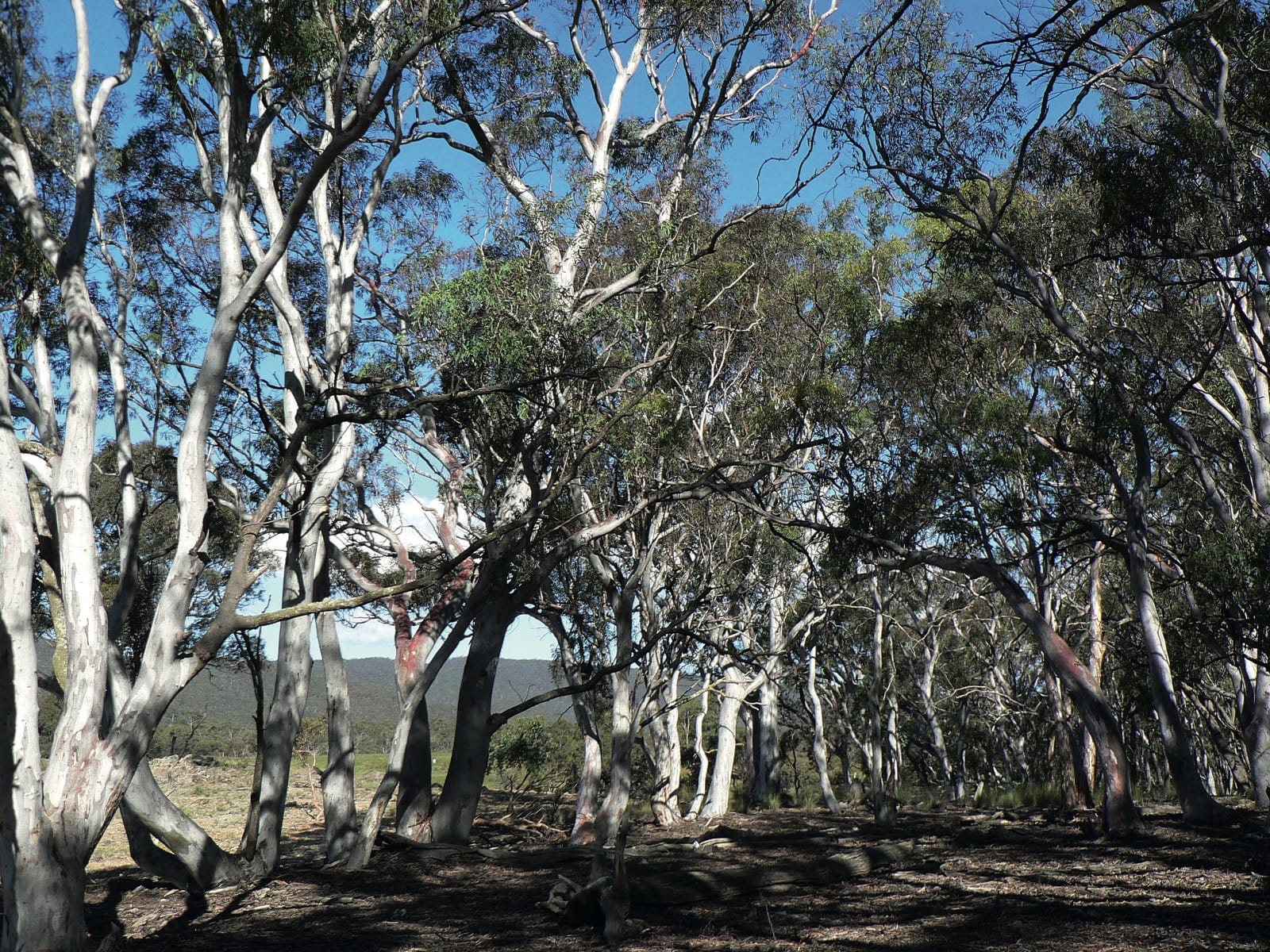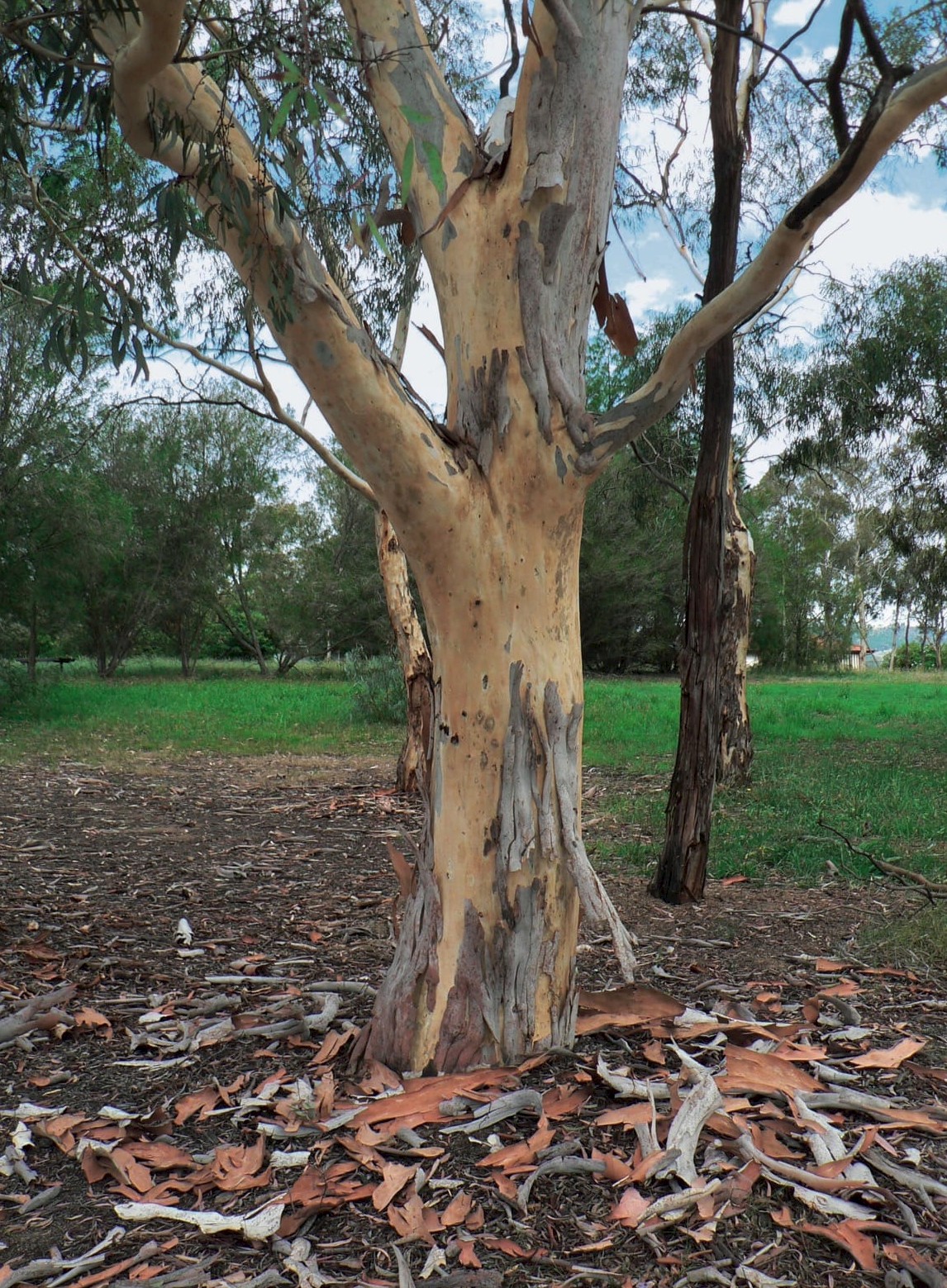Eucalyptus mannifera
Credits
Article from New Trees by John Grimshaw & Ross Bayton
Recommended citation
'Eucalyptus mannifera' from the website Trees and Shrubs Online (treesandshrubsonline.
Genus
Common Names
- Mottled Gum
- Brittle Gum
Other taxa in genus
- Eucalyptus acaciiformis
- Eucalyptus albida
- Eucalyptus amygdalina
- Eucalyptus archeri
- Eucalyptus blakelyi
- Eucalyptus bridgesiana
- Eucalyptus brookeriana
- Eucalyptus camaldulensis
- Eucalyptus camphora
- Eucalyptus chapmaniana
- Eucalyptus cinerea
- Eucalyptus coccifera
- Eucalyptus cordata
- Eucalyptus crenulata
- Eucalyptus cypellocarpa
- Eucalyptus dalrympleana
- Eucalyptus delegatensis
- Eucalyptus elliptica
- Eucalyptus fastigata
- Eucalyptus fraxinoides
- Eucalyptus globulus
- Eucalyptus gregsoniana
- Eucalyptus gunnii
- Eucalyptus johnstonii
- Eucalyptus kybeanensis
- Eucalyptus lacrimans
- Eucalyptus laophila
- Eucalyptus leucoxylon
- Eucalyptus macarthurii
- Eucalyptus macrorhyncha
- Eucalyptus melliodora
- Eucalyptus mitchelliana
- Eucalyptus moorei
- Eucalyptus morrisbyi
- Eucalyptus neglecta
- Eucalyptus nicholii
- Eucalyptus nitens
- Eucalyptus nova-anglica
- Eucalyptus obliqua
- Eucalyptus oreades
- Eucalyptus ovata
- Eucalyptus parvula
- Eucalyptus pauciflora
- Eucalyptus praecox
- Eucalyptus radiata
- Eucalyptus regnans
- Eucalyptus remota
- Eucalyptus risdonii
- Eucalyptus rodwayi
- Eucalyptus rubida
- Eucalyptus saligna
- Eucalyptus sideroxylon
- Eucalyptus stellulata
- Eucalyptus subcrenulata
- Eucalyptus tenuiramis
- Eucalyptus urnigera
- Eucalyptus viminalis
Tree to 25 m. Bark white, cream or grey, sometimes with red patches, smooth and powdery throughout. Branchlets greenish brown. Juvenile leaves alternate and petiolate, glaucous or not. Adult leaves dull blue- or greyish green, 6–25 × 0.8–3 cm, lanceolate, lateral veins indistinct, margins entire, apex acuminate; petiole terete or channelled, 0.6–2.7 cm long. Inflorescences solitary and axillary; umbellasters with seven flowers. Flower buds ovoid or rarely club-shaped; hypanthium 0.2–0.4 cm wide; stamens white or cream. Capsule hemispherical, ovoid or subglobular, 0.4–0.7 cm diameter; valves three, slightly exserted. Chippendale 1988. Distribution AUSTRALIA: New South Wales (east), Queensland (extreme southeast), Victoria (east). Habitat Open forest on hills and tablelands. USDA Hardiness Zone 8. Conservation status Not evaluated. Illustration NT324, NT347.
Chippendale (1988) recognised five subspecies of Eucalyptus mannifera, but Johnson & Hill (1990b) elevated two, subsp. elliptica and subsp. praecox, to full species status. A key to the remaining subspecies (modified from Chippendale 1988) is provided below.
| 1a. | Adult leaves ≤ 2 cm wide | 2 |
| 1b. | Adult leaves ≥ 2 cm wide; Australia (southeastern New South Wales, eastern Victoria) | subsp. mannifera |
| 2a. | Juvenile leaves glaucous; hypanthium hemispherical; Australia (southeastern New South Wales, eastern Victoria) | subsp. maculosa (R.T. Baker) L.A.S. Johnson |
| 2b. | Juvenile leaves pale green; hypanthium conical; Australia (eastern New South Wales: Blue Mts.) | subsp. gullickii (R.T. Baker & H.G. Sm.) L.A.S. Johnson |
The various currently recognised subspecies of E. mannifera are not well known in cultivation, although E. elliptica (see p. 339) is sometimes grown as E. mannifera subsp. elliptica. At Tresco in 2006 there was a 9 m specimen of subsp. gullickii recorded for TROBI, but this is the only example of the species to find its way into the register. At Logan there is a group of subsp. mannifera grown from Hind 5472, accessioned in 1989, that are approximately 12 m tall at the time of writing, the largest having a dbh of 25 cm. These have smooth, reddish brown bark which is unusual for this species, in which the bark is normally rather a striking white, or white with reddish patches. More horticultural exploration of Eucalyptus mannifera as a whole is needed, and the Gum Group has little experience of it. It should be noted, however, that in Australia it is notorious for shedding branches – hence the name Brittle Gum (Australian National Botanic Gardens 2003b).


